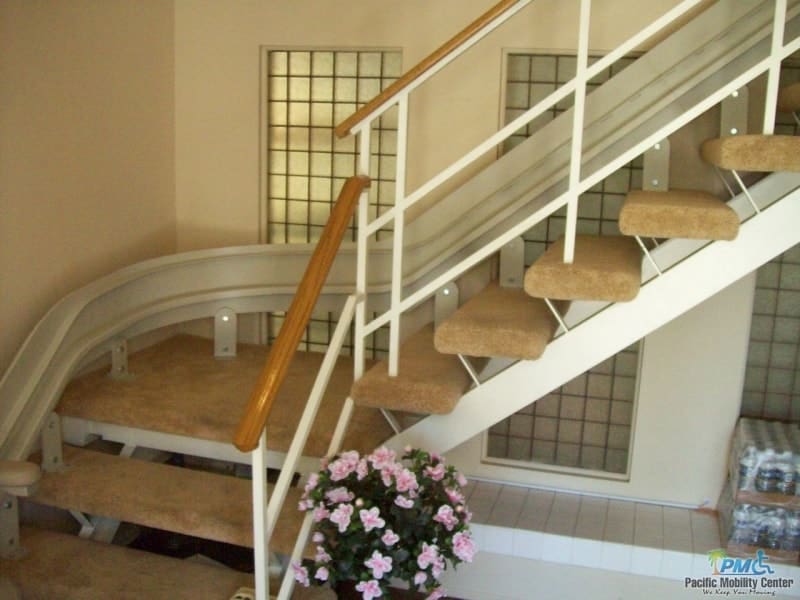There is something regal, almost royal, about a high-quality stairlift, but did you know that there is actually a royal connection? The roots of these life-altering mobility aids runs deep and has its earliest models around the 1500s, with King Henry VIII. Treat yourself to the royal treatment and learn more about how a stairlift can change your life for the better.
If you live with physical limitations or disabilities, you know how integral mobility aids are to everyday living. If you are going to invest in accessibility devices, go with the best; choose a product that is both highly rated and consumer approved; buyers widely endorse Bruno award winning mobility products. Call a mobility retailer to learn more about this brand and your options.
So where did it all begin?
It seems that the first stairlift appeared in the 1500s, during King Henry VIII’s regime. This unlikely royal decided that he needed a chair that moved up and down to assist him in his daily duties. Historians concur that King Henry was portly, obese in fact, and that this royal demand was in fact a necessity for the king’s mobility. Sources report that he experienced an injury while jousting which contributed to his limited mobility and demand for a stairlift type device. This primitive stairlift worked on a block and tackle system, requiring servants to use ropes and pulleys to elevate King Henry up and down his immense palace staircase, some 20-feet high. This report documents the earliest stairlifts seen in use, though not widely available as the cost would be prohibitive for mere peasants.
How did it all evolve?
Fast-forward 400 years after the king and his servant-pulled stairlift, and a Pennsylvania car dealer conceived of the idea to construct a lift for a friend who was confined to their bed and limited in their range of motion and physical mobility. This inventive individual formed a company that crafted and manufactured the first commercial stairlift that was available to the general public and widely available. Many of the initial consumers were those that were stricken with polio, the prevalent plague at that time, and these very simple aids quickly catapulted into wide utility and popularity.
How has technology impacted these aids?
There is an expression that relates to the overwhelming desire of mankind to build a better mousetrap; this is also true to some extent of stairlifts and mobility aids. As the early stairlift systems gained a consumer audience, they also captured the attention of early technological innovators, engineers, and designers. They began to focus on creating a better, more automated and user-friendly stairlift that was easier to use. The results are the stairlifts that most consumers are familiar with, complete with remotes, sensors, and safety features that far surpass the original conception of the stairlift.
This new technology is making it more feasible for seniors or those living with mobility issues to age in place, a moniker used to describe living on one’s own terms, in their own home. Aging in place is the desire of many consumers that fear being hospitalized or sent to live in a skilled nursing facility; with minimal community supports in many instances, the future can look bleak. Being able to enjoy familiar surroundings, life-long neighbors, and even beloved pets are elements of aging in place that compel many seniors to do whatever they can to remain in their own home as long as possible.
What does the future look like?
With this surge toward the web and the aging in place movement, the future looks even more hopeful for seniors or those living with physical limitations or challenges. Stairlifts are becoming even more user-friendly, creating a context that needs no other person to use and gain access. Aging in place offers seniors quality of life during their later years and the ability to make their own choices, independently, for as long as possible. The future should be focused on fending off injury and preserving health and wellness to ensure seniors are able to enjoy their golden years wherever and however they choose.
This is where mobility aids really come into play; stairlifts, chairs, and even grab-bars are all important parts of aging in place for anyone. These simple and widely available aids can make the difference between being hospitalized to rehabilitate from a fall and living life on your own terms. Staying safe and preventing nasty falls relies heavily on these mobility devices, even the simplest reaching tool to something more complex, like a porch lift, and is worth any and all efforts in that direction.
Get the royal treatment with the mobility professionals at Pacific Mobility; they offer award-winning products with top-rated service from customers widely. Now that you know the history of the stairlift, consider how one of these accessibility devices could potentially change your future; if you live with physical limitations, mobility issues, or physical disabilities, learn more about how a stairlift could improve your overall quality of life. Call today and speak with our mobility experts.
President, Husband, Father, Grandfather Graduate of UC Davis- Bio Sci Major- Go Aggies! Jeff has extensive experience in all of Pacific Mobility’s products and services, and specializes in accessibility products as well as stairlifts, ceiling lifts and custom wheel chairs. His hobbies include spending time with family, gardening, mountain biking, exercising and off road motorcycle riding.
24 years as Owner/President of Pacific Mobility Center – selling, installing, and servicing stairlifts, porch lifts, ceiling lifts, pool lifts, handicap ramping, specialty wheelchairs, scooters, power wheel chairs, and other power mobility devices
Certified Environmental Access Consultant since 2008
Licensed General Contractor since 1998
Certified Aging in Place Specialist since 2016
Board Member for Home Access Professionals
Member of Association of Members of the Accessibility Equipment Industry (AEMA)




